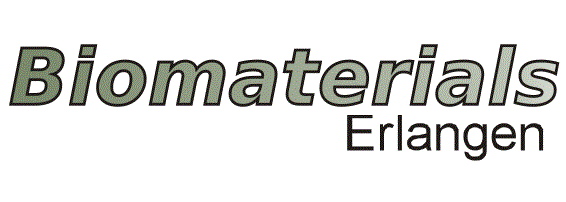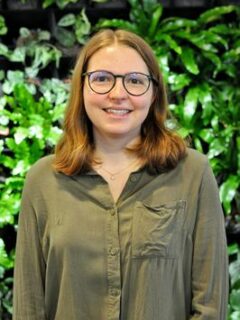Katharina Mai
Katharina Mai
Masterstudentin
Development of a 3D hydrogel matrix for culture of Xenopus retinal ganglion cells
Betreuerin: Prof. Kristian Franze (Institute of Medical Physics, FAU)
Co-Betreuer: Markus Lorke, Prof. Aldo R. Boccaccini
The current understanding of neuronal axon pathfinding during nervous system development is mainly based on chemical cues. Nevertheless, neurons also interact mechanically with their environment (Koser et al. 2016). To investigate the influence of mechanical signals on Xenopus retinal ganglion cells in vitro, a 3D model system that mimics the brain’s extracellular matrix (ECM) is necessary. Soft hydrogels, like hyaluronic acid (HA) and gelatin crosslinked with enzymatic agents, show mechanical properties similar to those of neural tissue (Kuth et al. 2022). However, incorporating the viscoelastic behavior of the brain ECM into these hydrogels is challenging. The thesis aims to develop a 3D hydrogel that replicates the brain ECM’s mechanical properties and is suitable for culture of Xenopus retinal ganglion cell. The project is carried out in the framework of the Collaborative Research Centre CRC/SFB 1540 „Exploring Brain Mechanics“.
Koser, David E.; Thompson, Amelia J.; Foster, Sarah K.; Dwivedy, Asha; Pillai, Eva K.; Sheridan, Graham K. et al. (2016): Mechanosensing is critical for axon growth in the developing brain. In: Nature neuroscience 19 (12), S. 1592–1598. DOI: 10.1038/nn.4394.
Kuth, Sonja; Karakaya, Emine; Reiter, Nina; Schmidt, Laura; Paulsen, Friedrich; Teßmar, Jörg et al. (2022): Oxidized Hyaluronic Acid-Gelatin-Based Hydrogels for Tissue Engineering and Soft Tissue Mimicking. In: Tissue engineering. Part C, Methods 28 (7), S. 301–313. DOI: 10.1089/ten.TEC.2022.0004.

